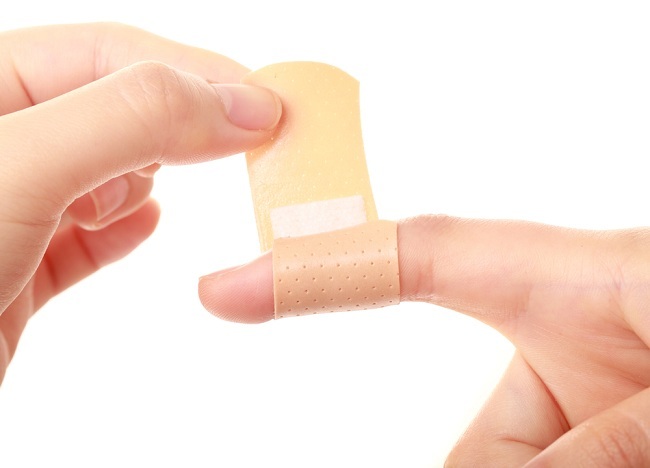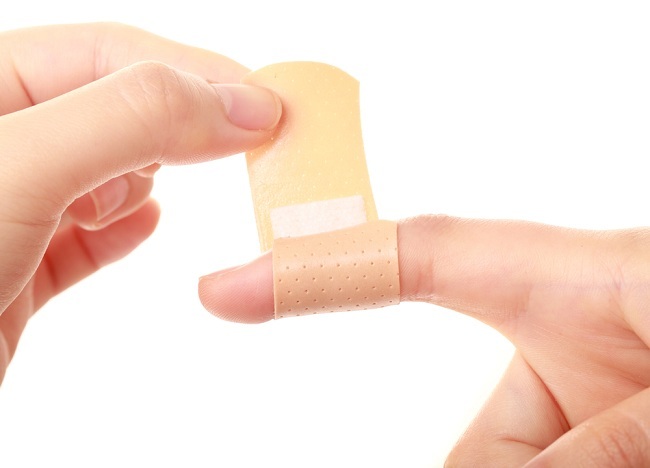Everyone must have experienced injuries, whether small wounds or large wounds, such as surgery scars. Good and safe wound care must be done so as not to cause infection.
The wound will certainly cause pain, but the severity will vary, depending on the location, type, and severity of the wound. Deep or extensive wounds require wound care in a hospital or clinic. Meanwhile, minor injuries can be treated through independent wound care at home.

Types of Wounds
Although the basic principles are the same, the wound care steps may differ depending on the type of wound. The following are the types of wounds that are commonly encountered:
1. Torn or avulsion
Avulsion is the tearing of part or all of the skin and underlying tissue. These lacerations can occur due to gunshots, explosions, serious accidents, or fights. Blood that comes out due to this type of wound is usually fast and a lot, so it needs immediate medical attention.
2. Stab wound
A stab wound is caused by a sharp, long object, such as a knife, needle, or nail. Although generally do not cause a lot of blood to come out, this type of wound can penetrate the skin to injure internal organs.
In addition, stab wounds can also cause tetanus. If you are pierced by a dirty object, such as a rusty nail, it is advisable to immediately consult a doctor. The doctor will treat the wound to prevent infection, and give a tetanus vaccination if needed.
3. Wounds tear or laceration
A torn wound can be a minor scratch, it can also be a deep wound with an irregular shape. These injuries are often found in accidents while driving or working, for example due to machinery.
The urgency of this wound treatment depends on the severity of the bleeding and the part of the body affected. If the wound is deep, bleeding can be difficult to stop.
4. Cuts or incisions
Cuts can be caused by flat and sharp objects, such as razors, broken glass, knives, or even paper. In addition, cuts can also be caused by surgical procedures. As with lacerations, the urgency of treating this wound depends on the bleeding condition and the location of the wound.
5. Scratches or abrasion
Abrasion occurs when the skin rubs against or rubs against a rough or hard surface, such as a paved road or cement. Although it does not cause much bleeding, this type of wound needs to be cleaned properly to avoid infection.
How to Treat Wounds Correctly
Minor cuts and abrasions usually don’t require medical attention. the skin will heal as usual with the following wound care steps:
1. Wash your hands
Before performing wound care, wash your hands first with running water and soap to avoid infection.
2. Pressing the wound
Bleeding from minor cuts and scrapes will usually stop on its own. If not, apply gentle pressure to the wound with a clean cloth. Position the injured body part higher.
3. Clean the wound
Rinse the wound with clean running water. Around the wound can be cleaned with soap, but not on the wound, to avoid irritation.
If there are dirt or objects stuck in the wound after cleaning, use sterile tweezers (which have been cleaned with alcohol) to remove it.
If the object is still stuck, go to the doctor for a thorough cleaning of the wound to reduce the risk of infection and tetanus.
There is no need to use liquid hydrogen peroxide, red medicine, or antiseptic solutions containing iodinebecause it can cause irritation to the wound.
4. Applying an antibiotic cream or ointment
Apply an antibiotic cream or ointment to help keep the surface of the skin moist. This medicine does not make the wound heal quickly, but it can prevent infection so that the wound healing process can run well. However, if a rash appears on the skin, immediately stop using the ointment.
5. Close the wound
Wound bandages are used to keep the wound clean and free from bacteria. However, if the wound or scratch is relatively small, then there is no need to bandage it. Don’t forget to change the bandage at least once a day or whenever it gets wet or dirty.
If the wound is deep, gaping, and visible fat or muscle, immediately go to the hospital or clinic for stitches. In deep or dirty wounds, a tetanus shot may be needed in wound care. Likewise if you have not had a tetanus shot in the last five years.
You should see a doctor if the wound does not heal, becomes red, swollen, feels more painful, or there is pus coming out.











